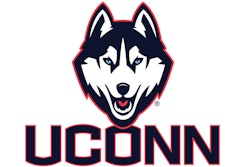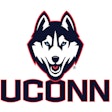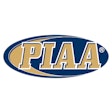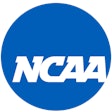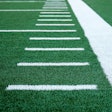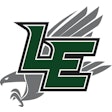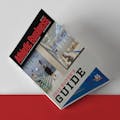|
Copyright 2013 Richmond Newspapers, Inc. All Rights Reserved Richmond Times Dispatch (Virginia) |
|
September 10, 2013 Tuesday
State Edition |
|
NEWS; Pg. A-01
|
|
810 words
|
| 12 percent of tuition, fees go to sports |
|
TIM PEARRELL
|
|
As scrutiny increases on the use of mandatory student fees to pay for athletic programs, a state legislative study indicates Virginia's public schools and universities are charging significant amounts to make up shortfalls. Students at Virginia's state-supported four-year schools had an average of 12 percent of their tuition and fees during the 2012-13 school year plowed into athletic budgets, the study said. Schools do not receive state money for their athletic programs. Auxiliary enterprises -- athletics, campus recreation, student housing and student dining -- are expected to be self-supporting through student fees and other revenue. The Joint Legislative Audit and Review Commission's report on auxiliary enterprises on Monday found that 10 athletic programs generated only a small amount of the revenue needed to cover their expenses in 2011-12. Only Virginia Tech (89 percent) and the University of Virginia (84 percent) -- which get significant revenue-sharing sums from the Atlantic Coast Conference -- and Virginia Military Institute (61 percent) and William and Mary (44 percent) were above 26 percent. U.Va. and Virginia Tech had the only football teams and men's basketball teams that didn't have a shortfall in 2011-12, according to the report. The General Assembly directed JLARC to study the cost efficiency of the state's public colleges and universities and identify opportunities to reduce the cost of higher education. Part of JLARC's ongoing review found that total athletic spending for state programs has increased $85.9 million in the past six years, with an average growth of 43 percent. Nationally, subsidies for athletics rose nearly $200 million from 2011 to 2012 for 228 Division I public schools, according to a USA Today study. Only 23 schools made enough money to pay for their athletic programs. The state increase was attributed to athletic scholarships, coaching and support staff salaries, and facilities. JLARC project leader Walt Smiley said his staff wanted to hold off on broad "how-to-fix-it" recommendations for auxiliary enterprises until the series of reports is finished next year. The legislature's watchdog agency said students may not be aware of how much they're paying for athletic fees and recommended that each school's board of visitors require that fees be listed on websites. Longwood's student fees increased from $711 to $2,009 during a 10-year period after the school decided to move to Division I in June 2000. In a letter to the commission, Longwood President W. Taylor Reveley IV said that the move to Division I contributed to a deeper sense of pride and spirit and that the university hopes to hold the athletic fee constant for the next several years with "greater philanthropy and prudent budgeting." Old Dominion's student fees jumped from $641 to $1,185 from 2004-05 to 2011-12 after the school decided to restart football. Old Dominion is transitioning to the highest level of football, the Football Bowl Subdivision, and to Conference USA, but athletic director Wood Selig said the school did not raise student fees to pay for the estimated extra $3 million cost per year. "When I was hired (four years ago), President (John R.) Broderick in my interview was quick to point out we cannot continue to increase our student fee funding at large levels," Selig said. "Athletics has got to prove that they can sustain themselves at a higher level from corporate and private and ticket and conference revenue. Since I've been here, that's been one of our primary goals." (804) 649-6965 @timpearrelltd Mandatory activity fees The amount of mandatory activities fees paid per student for 2012-13 at Virginia public four-year colleges that is applied to intercollegiate athletics programs according to a study released Monday by the Joint Legislative Audit and Review Commission, the General Assembly's governmental watchdog agency. Longwood $2,044 Christopher Newport $1,795 VMI $1,622 Norfolk State $1,618 William and Mary$1,584 James Madison $1,528 Old Dominion $1,453 U.Va.-Wise $1,219 Radford $1,138 Virginia State $892 Mary Washington $747 U.Va. $657 VCU $635 George Mason $577 Virginia Tech $267 Statewide average $1,185 Source: Joint Legislative Audit and Review Commission ---- Revenue from athletics Without student fees, most athletic programs generated only a small amount of the revenue needed to cover their expenses in 2011-12. Here are the percentages: Virginia Tech 89 U.Va.84 VMI 61 William and Mary 44 Old Dominion 26 VCU 24 George Mason 21 James Madison 21 Longwood 15 Mary Washington 14 Norfolk State 14 Radford 12 Virginia State 5 Christopher Newport 3 Note: The report does not provide revenue figures for U.Va.-Wise. Source: Joint Legislative Audit and Review Commission Copyright © 2013, The Richmond Times-Dispatch and may not be republished without permission. E-mail [email protected] |
|
September 11, 2013
|
Terms and Conditions Privacy Policy


















